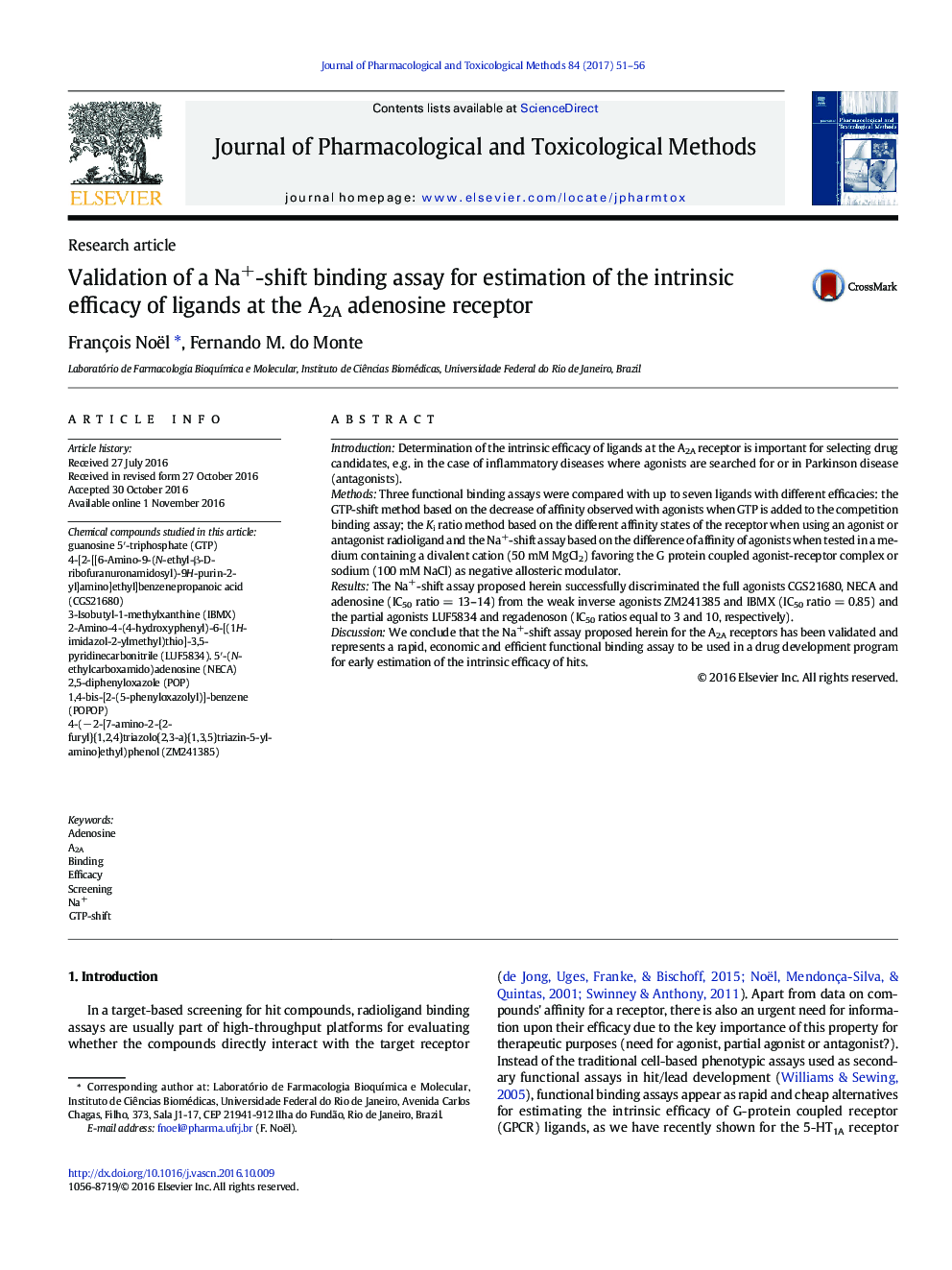| Article ID | Journal | Published Year | Pages | File Type |
|---|---|---|---|---|
| 5556551 | Journal of Pharmacological and Toxicological Methods | 2017 | 6 Pages |
IntroductionDetermination of the intrinsic efficacy of ligands at the A2A receptor is important for selecting drug candidates, e.g. in the case of inflammatory diseases where agonists are searched for or in Parkinson disease (antagonists).MethodsThree functional binding assays were compared with up to seven ligands with different efficacies: the GTP-shift method based on the decrease of affinity observed with agonists when GTP is added to the competition binding assay; the Ki ratio method based on the different affinity states of the receptor when using an agonist or antagonist radioligand and the Na+-shift assay based on the difference of affinity of agonists when tested in a medium containing a divalent cation (50 mM MgCl2) favoring the G protein coupled agonist-receptor complex or sodium (100 mM NaCl) as negative allosteric modulator.ResultsThe Na+-shift assay proposed herein successfully discriminated the full agonists CGS21680, NECA and adenosine (IC50 ratio = 13-14) from the weak inverse agonists ZM241385 and IBMX (IC50 ratio = 0.85) and the partial agonists LUF5834 and regadenoson (IC50 ratios equal to 3 and 10, respectively).DiscussionWe conclude that the Na+-shift assay proposed herein for the A2A receptors has been validated and represents a rapid, economic and efficient functional binding assay to be used in a drug development program for early estimation of the intrinsic efficacy of hits.
